Helping Patrons Find What They’re Looking for On Our Shelves
I would like to propose something that will be complete heresy to many people in library land. But my friends, some of our standard operating procedures make it really difficult for our patrons to walk up to a shelf, find what they want or discover something new, and walk away a satisfied customer. So I have some revolutionary ideas I would like to propose.
We have to stop shelving books in strict alphabetical order
In most libraries, we shelve books alphabetically by author’s last name and then alphabetically by title within each author group. In a lot of cases this works perfectly well, except when the author writes a series or multiple series. What I propose is this: on our spine labels, we put the name of each series and the book number and shelve accordingly. Thus, each author who writes a series would have the series shelved numerically and patron’s browsing the shelves would clearly see what the series is and what book number it is.
ADVERTISEMENT
ADVERTISEMENT
This is a patron based system that helps make each library visit successful and satisfying for our patrons. Take, for example, Jennifer Lynne Barnes who writes multiple (all very good) ya series. Here we see that among the various series one of those is The Naturals and by putting that information on the spine label and shelving them in order on the shelf, patrons can walk up to the shelf and find the next book in the series.
My corollary to this is that we should also think about the ways in which we catalog certain series. For example, there is currently a DC Icons series which has various titles written by popular YA authors, which means that each book in the series would be shelves by author. However, if we shelved the books by series name, DC Icons, all the DC character books would be shelved together. This one in particular is tricky because some people might want to read Wonder Woman by Leigh Bardugo because they are Leigh Bardugo or Wonder Woman fans and not care about the other books in the series, while some readers will want to read the entire series. In this scenario I am still inclined to shelve all the titles together as DC Icons, but it’s possible that I am wrong.
On shelf merchandising
Rows and rows and rows of full shelves can cause browsing fatigue. Even I, a librarian who loves YA, can walk up to a book shelf and start browsing for something new to read and I get overwhelmed by the sheer number of titles that stand before me. This is part of the reason that those in the know about marketing and merchandising suggest having your shelves no more than 1/2 to 2/3 full. But there is something else we can do on our shelves to help break up the shelves and prevent browsing fatigue:
If you have multiple copies of titles, face those titles out right in the middle of the shelf. This works best with multiple copies because it allows a patron to take a copy and there are still a couple before it holding the row of books up. When scanning the shelves of books, having copies facing out in the middle of a row helps to break up that browsing fatigue and keeps the eye engaged.
Putting complete series on a new book shelf display, not just the newest title
Most libraries have a new book display section or shelf where we pull and put a new book on display. Sometimes, however, that book is book 2 or 3 in a trilogy, which means a patron who walks up and browses the display sees book 2 or 3 and now has to try and find books 1 and 2 before they can start reading book 3. What if we just put the entire trilogy on a the display shelf with the new book so patrons could walk up to the display, see the series, and check it all out at once? Yes, some readers only want book 3. But if we want to make things as easy as possible for our patrons, pulling books 1 and 2 and putting them on display with book 3 will help them discover a new series and walk away satisfied patrons.
Don’t get me wrong, all of these proposals require more diligence on our part when it comes to merchandising. It means we have to constantly go back into our shelves and straighten, fill holes, pull books and re-shelve them. And for most libraries, changing the spine labels to represent series would require a lot of work (and money) and re-training of staff. But if we are being truly patron centered and thinking about ways in which we can help our patrons walk away successfully with a satisfying user experience, I think the extra work is worth the effort. I think these are particularly good practices for teen readers who often want to browse the shelves but don’t always want to ask an adult staff person for help finding the next book in a series or for book recommendations. And let’s face it, even our best staff don’t know every book series order and this helps staff as well as patrons. Our goal is satisfied customers checking out books and I believe these practices help make that happen.
Filed under: Professional Development
About Karen Jensen, MLS
Karen Jensen has been a Teen Services Librarian for almost 30 years. She created TLT in 2011 and is the co-editor of The Whole Library Handbook: Teen Services with Heather Booth (ALA Editions, 2014).
ADVERTISEMENT
ADVERTISEMENT
SLJ Blog Network
One Star Review, Guess Who? (#202)
This Q&A is Going Exactly As Planned: A Talk with Tao Nyeu About Her Latest Book
Exclusive: Giant Magical Otters Invade New Hex Vet Graphic Novel | News
Parsing Religion in Public Schools
ADVERTISEMENT


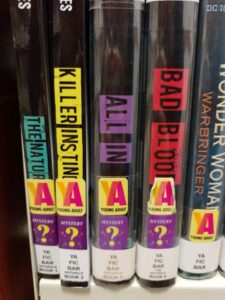
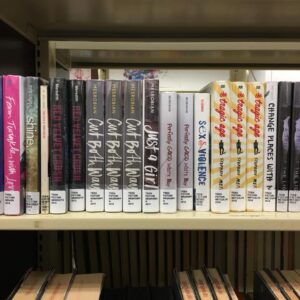

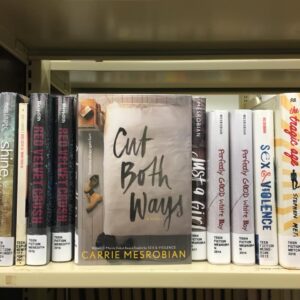

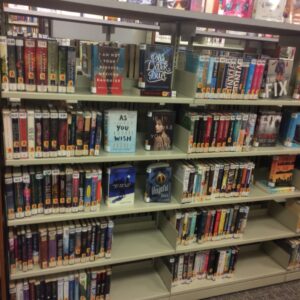
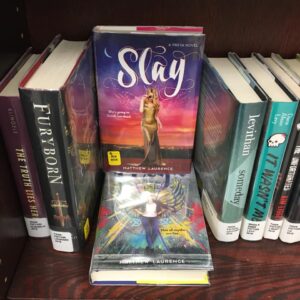






We put the series information on our spines (on a separate label, rather than the spine label, partly because it’s easier to read, partly because it meant that we could do a rolling start) and we’ve had a lot of positive patron feedback. And as you’ve mentioned, it’s also helpful for the staff, especially for series where the titles are all similar as part of the branding.
We feel cutting edge as we do most of the things suggested in the article. Books like the 39 clues, that all have different authors, we catalog them as Mystery 039 (we have genrefied our fiction).
You are cutting edge and awesome!!! And yes, 39 Clues should 100% be shelved together, thank you for doing that!!!
We’ve done something similar to the series in the Teen section of the library I work at. We put it on the spine label, so the call number looks like T LU LEG #2 (T for Teen, Marie Lu, the Legend series, #2). It took a lot of work, and a lot of me browsing the teen section to find all of the series and then compile a list of all the series and which book was which, but it’s been well worth the trouble. It’s easier for staff to shelve, and it helps patrons because they no longer have to come ask which book is first in the series. It’s also helpful for the authors who have multiple series (like Sarah J Maas and Rick Riordan) so staff/patrons know which book goes with which series.
I love this! It just makes browsing the shelves easier IMHO.
I love to face out multiple copies of the same book but other staff don’t like it because sometimes they fall over or sometimes they fall into the crack at the back of the shelf. How do you address those issues or do you just deal with it?
We use shelf stands for this purpose. An example is here https://www.openingthebook.com/library-furniture/library-display-furniture/on-shelf-book-display/small-feature-fillers
We started adding the series and number to spine labels around 2005. And we started using the series name for multi-author series around the same time. It’s funny how, even after all this time, we occasionally find an author whose series we have overlooked and failed to add to the spine label.
We, also, catalogue books that are in a series together when they are written by numerous authors.
I do like the idea of putting series together on one shelf so that it is easier for our learners to select a book, for example, books by John Flanagan and Michael Grant who have more than one series. We are limited on shelf space but I will put these on display now on the top of the shelf where learners can easily scan for the next book in the series.